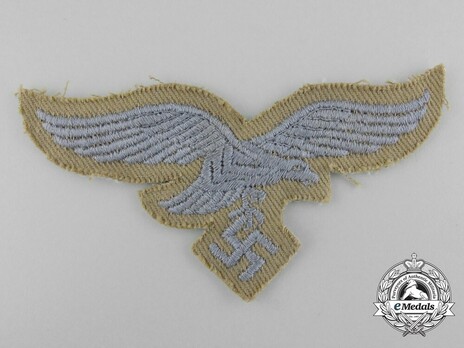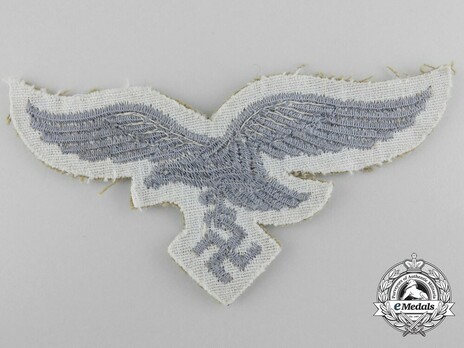Afrikakorps Luftwaffe Breast Eagle
SKU: 23.GOR.03.02.01.03.001
Estimated market value:


Estimated market value:
Attributes
History
During the Second World War, German troops stationed in northern Africa are generally referred to as the Afrikakorps. Technically, this is not entirely correct, since some German units operating in Africa were not actually part of the DAK (Deutsches Afrikakorps), and some units of it were, in fact, Italian ones. However, for the purpose of collecting so-called “tropical” uniforms and insignia, collectors have simplified the meaning of the term.
The first German troops were sent to northern Africa in February of 1941, to support their Italian allies against the British. The climate of the African continent made it necessary to wear specialised uniforms and gear that not only supported the soldiers in serving in a hot and arid environment, but also helped them in blending in with the landscape, which, in general, presented itself as brown, olive, khaki, or sand/tan in colour. Worn over long periods of time under the blistering desert sun, some uniforms were eventually bleached to white or off-white. Uniforms and insignia in these colours are often referred to as “tropical”, and it is worth noting that they weren’t just worn by members of units stationed in Africa, but in the entire Mediterranean theatre of war, including southern France, Italy, the Balkans, and Greece, as well as in southern Russia during the summer months. Tropical uniforms were worn by members of all three branches of the Wehrmacht: the Heer (army), the Kriegsmarine (navy), and the Luftwaffe (air force). Members of the Waffen-SS stationed in southerly regions also wore tropical-style uniforms, and even though they technically have no connection to the DAK, all tropical uniforms and insignia of all branches of the German military are listed here.
The breast eagles face to the viewer’s right, their left leg clutching the swastika. They are surrounded by a small cloth backing outline in the colour of the uniform they were meant for. However, eagles on a cloth backing in the form of a downward pointing triangle were also used.
These breast eagles take the form of the Luftwaffe pattern national emblem, and they are produced from different materials for each rank. For General ranks, the eagles are hand-embroidered and composed of gold-coloured wire thread. For Officer ranks, the eagles are hand-embroidered and composed of silver-coloured wire thread. Machine-embroidered eagles exist, but are rare.
For NCOs and EMs (Non-Commissioned Officers and Enlisted Men) the eagles are usually machine-embroidered and composed of light grey or white cotton thread. Hand-embroidered eagles were permitted on privately purchased tunics.
The eagles were worn on almost all uniform garments. The cloth backing of the eagles is in the colour of the uniform piece it was attached to.


Comments
Sign in to comment and reply.


Scroll Top